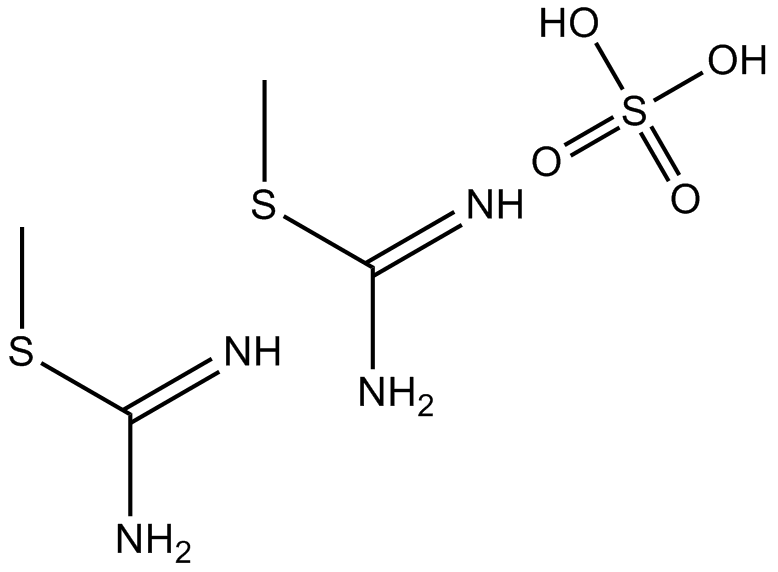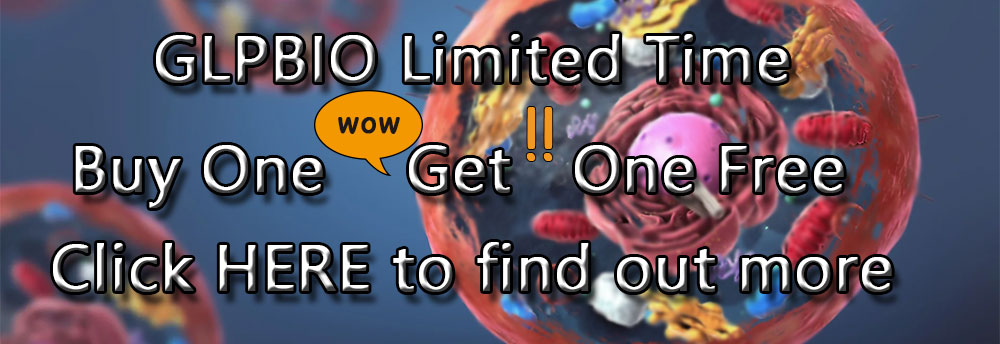Immunology/Inflammation
The immune and inflammation-related pathway including the Toll-like receptors pathway, the B cell receptor signaling pathway, the T cell receptor signaling pathway, etc.
Toll-like receptors (TLRs) play a central role in host cell recognition and responses to microbial pathogens. TLR4 initially recruits TIRAP and MyD88. MyD88 then recruits IRAKs, TRAF6, and the TAK1 complex, leading to early-stage activation of NF-κB and MAP kinases [1]. TLR4 is endocytosed and delivered to intracellular vesicles and forms a complex with TRAM and TRIF, which then recruits TRAF3 and the protein kinases TBK1 and IKKi. TBK1 and IKKi catalyze the phosphorylation of IRF3, leading to the expression of type I IFN [2].
BCR signaling is initiated through ligation of mIg under conditions that induce phosphorylation of the ITAMs in CD79, leading to the activation of Syk. Once Syk is activated, the BCR signal is transmitted via a series of proteins associated with the adaptor protein B-cell linker (Blnk, SLP-65). Blnk binds CD79a via non-ITAM tyrosines and is phosphorylated by Syk. Phospho-Blnk acts as a scaffold for the assembly of the other components, including Bruton’s tyrosine kinase (Btk), Vav 1, and phospholipase C-gamma 2 (PLCγ2) [3]. Following the assembly of the BCR-signalosome, GRB2 binds and activates the Ras-guanine exchange factor SOS, which in turn activates the small GTPase RAS. The original RAS signal is transmitted and amplified through the mitogen-activated protein kinase (MAPK) pathway, which including the serine/threonine-specific protein kinase RAF followed by MEK and extracellular signal related kinases ERK 1 and 2 [4]. After stimulation of BCR, CD19 is phosphorylated by Lyn. Phosphorylated CD19 activates PI3K by binding to the p85 subunit of PI3K and produce phosphatidylinositol-3,4,5-trisphosphate (PIP3) from PIP2, and PIP3 transmits signals downstream [5].
Central process of T cells responding to specific antigens is the binding of the T-cell receptor (TCR) to specific peptides bound to the major histocompatibility complex which expressed on antigen-presenting cells (APCs). Once TCR connected with its ligand, the ζ-chain–associated protein kinase 70 molecules (Zap-70) are recruited to the TCR-CD3 site and activated, resulting in an initiation of several signaling cascades. Once stimulation, Zap-70 forms complexes with several molecules including SLP-76; and a sequential protein kinase cascade is initiated, consisting of MAP kinase kinase kinase (MAP3K), MAP kinase kinase (MAPKK), and MAP kinase (MAPK) [6]. Two MAPK kinases, MKK4 and MKK7, have been reported to be the primary activators of JNK. MKK3, MKK4, and MKK6 are activators of P38 MAP kinase [7]. MAP kinase pathways are major pathways induced by TCR stimulation, and they play a key role in T-cell responses.
Phosphoinositide 3-kinase (PI3K) binds to the cytosolic domain of CD28, leading to conversion of PIP2 to PIP3, activation of PKB (Akt) and phosphoinositide-dependent kinase 1 (PDK1), and subsequent signaling transduction [8].
References
[1] Kawai T, Akira S. The role of pattern-recognition receptors in innate immunity: update on Toll-like receptors[J]. Nature immunology, 2010, 11(5): 373-384.
[2] Kawai T, Akira S. Toll-like receptors and their crosstalk with other innate receptors in infection and immunity[J]. Immunity, 2011, 34(5): 637-650.
[3] Packard T A, Cambier J C. B lymphocyte antigen receptor signaling: initiation, amplification, and regulation[J]. F1000Prime Rep, 2013, 5(40.10): 12703.
[4] Zhong Y, Byrd J C, Dubovsky J A. The B-cell receptor pathway: a critical component of healthy and malignant immune biology[C]//Seminars in hematology. WB Saunders, 2014, 51(3): 206-218.
[5] Baba Y, Matsumoto M, Kurosaki T. Calcium signaling in B cells: regulation of cytosolic Ca 2+ increase and its sensor molecules, STIM1 and STIM2[J]. Molecular immunology, 2014, 62(2): 339-343.
[6] Adachi K, Davis M M. T-cell receptor ligation induces distinct signaling pathways in naive vs. antigen-experienced T cells[J]. Proceedings of the National Academy of Sciences, 2011, 108(4): 1549-1554.
[7] Rincón M, Flavell R A, Davis R A. The Jnk and P38 MAP kinase signaling pathways in T cell–mediated immune responses[J]. Free Radical Biology and Medicine, 2000, 28(9): 1328-1337.
[8] Bashour K T, Gondarenko A, Chen H, et al. CD28 and CD3 have complementary roles in T-cell traction forces[J]. Proceedings of the National Academy of Sciences, 2014, 111(6): 2241-2246.
Targets for Immunology/Inflammation
- Cyclic GMP-AMP Synthase(1)
- Apoptosis(137)
- 5-Lipoxygenase(18)
- TLR(106)
- Papain(2)
- PGDS(1)
- PGE synthase(26)
- SIKs(10)
- IκB/IKK(83)
- AP-1(2)
- KEAP1-Nrf2(47)
- NOD1(1)
- NF-κB(265)
- Interleukin Related(129)
- 15-lipoxygenase(2)
- Others(10)
- Aryl Hydrocarbon Receptor(35)
- CD73(16)
- Complement System(46)
- Galectin(30)
- IFNAR(19)
- NO Synthase(78)
- NOD-like Receptor (NLR)(37)
- STING(84)
- Reactive Oxygen Species(434)
- FKBP(14)
- eNOS(4)
- iNOS(24)
- nNOS(21)
- Glutathione(37)
- Adaptive Immunity(144)
- Allergy(129)
- Arthritis(25)
- Autoimmunity(134)
- Gastric Disease(64)
- Immunosuppressants(27)
- Immunotherapeutics(3)
- Innate Immunity(411)
- Pulmonary Diseases(76)
- Reactive Nitrogen Species(43)
- Specialized Pro-Resolving Mediators(42)
- Reactive Sulfur Species(24)
Products for Immunology/Inflammation
- Cat.No. Nombre del producto Información
-
GC50569
NLRP3-IN-2
NLRP3-IN-2, un sustrato intermedio en la sÍntesis de glibenclamida, inhibe la formaciÓn del inflamasoma NLRP3 en los cardiomiocitos y limita el tamaÑo del infarto después de la isquemia/reperfusiÓn miocÁrdica en el ratÓn, sin afectar el metabolismo de la glucosa.

-
GC45194
α-(difluoromethyl)-DL-Arginine
Bacteria synthesize the cellular growth factor putrescine through a number of pathways.

-
GC65446
α-Amyrin acetate
α-Amyrin acetato, un triterpenoide natural, tiene actividad antiinflamatoria, perfil antiespasmódico y efecto relajante.
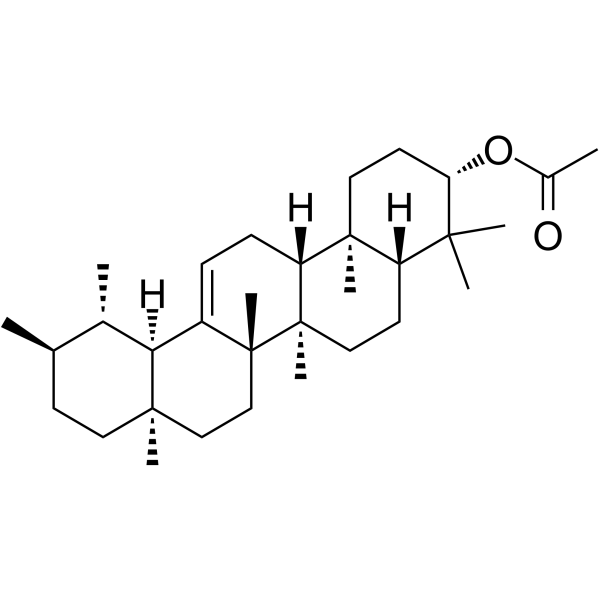
-
GC49838
α-Cortolone
A metabolite of cortisol

-
GC48279
α-D-Glucose-1-phosphate (sodium salt hydrate)
An intermediate in glycogen metabolism

-
GC52253
α-Enolase (1-19)-biotin Peptide
A biotinylated α-enolase peptide

-
GC45206
α-GalCer analog 8
α-Galactosylceramide analog 8 (α-GalCer analog 8) is a triazole derivative of α-galactosylceramide.

-
GC40262
α-Humulene
α-El humuleno es un constituyente principal de Tanacetum vulgare L.

-
GC45601
α-Linolenic Acid ethyl ester-d5

-
GC48292
α-MSH (human, mouse, rat, porcine, bovine, ovine) (trifluoroacetate salt)
α-MSH (α-Melanocyte-Stimulating Hormone) TFA, un neuropéptido endÓgeno, es un agonista endÓgeno del receptor 4 de melanocortina (MC4R) con actividades antiinflamatorias y antipiréticas.

-
GC41499
α-Phellandrene
α-Phellandrene is a cyclic monoterpene that has been found in various plants, including Cannabis, and has diverse biological activities.

-
GC63941
α-Solanine
α se ha observado que la solanina, un componente bioactivo y uno de los principales glicoalcaloides esteroideos de las patatas, inhibe el crecimiento e induce la apoptosis en las células cancerosas.
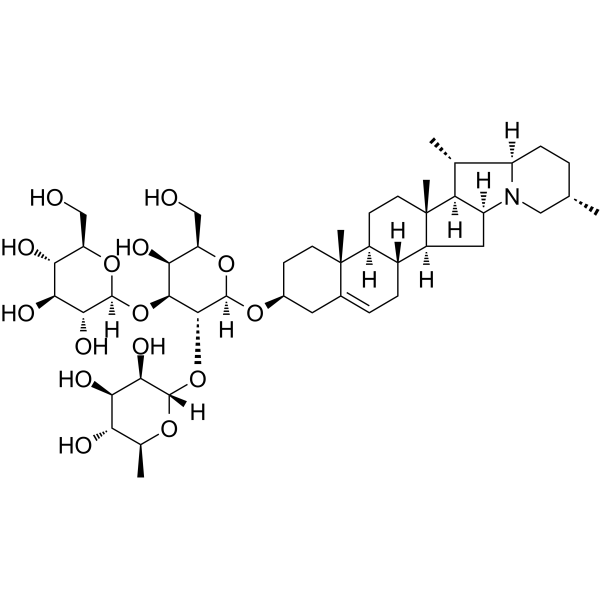
-
GC67618
α-Tocopherol phosphate disodium
α-El fosfato de tocoferol (fosfato de alfa-tocoferol) disódico, un antioxidante prometedor, puede proteger contra la muerte celular inducida por UVA1 de onda larga y eliminar las ROS inducidas por UVA1 en un modelo de células de la piel. α-El fosfato de tocoferol disódico posee potencial terapéutico en la inhibición de la apoptosis y aumenta la capacidad migratoria de las células progenitoras endoteliales en condiciones de hiperglucemia/hipoxia y promueve la angiogénesis.
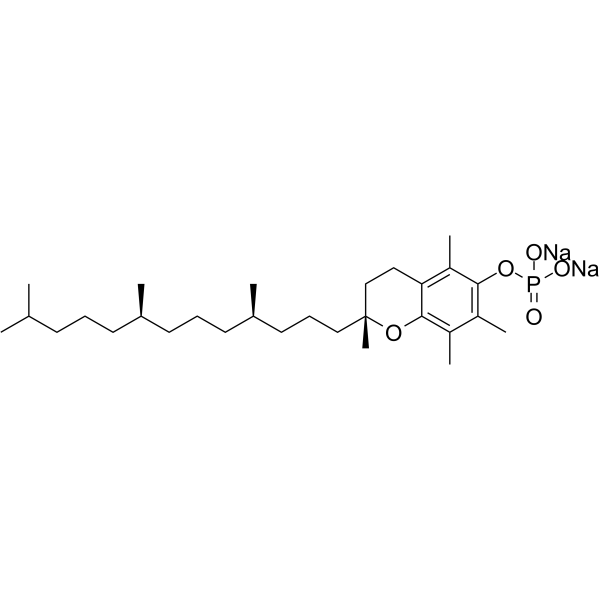
-
GC49467
β-Aescin
A triterpenoid saponin with diverse biological activities

-
GC37999
β-Anhydroicaritin
β-La anhidroicaritina es aislada de Boswellia carterii Birdware, tiene importantes efectos biológicos y farmacológicos, como antiosteoporosis, regulación de estrógenos y propiedades antitumorales.
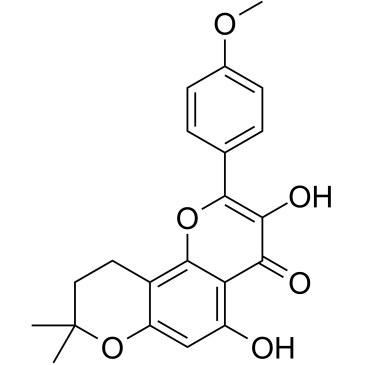
-
GC45225
β-Apooxytetracycline
β-Apooxytetracycline is a potential impurity found in commercial preparations of oxytetracycline.

-
GC48920
β-Carboline-1-carboxylic Acid
An alkaloid with diverse biological activities

-
GC66870
β-D-Glucan
β-D-glucan es un polisacárido natural no digerible y de alta biocompatibilidad que puede ser reconocido selectivamente por receptores de reconocimiento como Dectin-1 y Toll-like, además de ser fácilmente internalizado por macrófagos murinos o humanos, que es probable que atribuir a una entrega de destino. β-d-glucan es un vehículo de suministro entérico para probióticos.
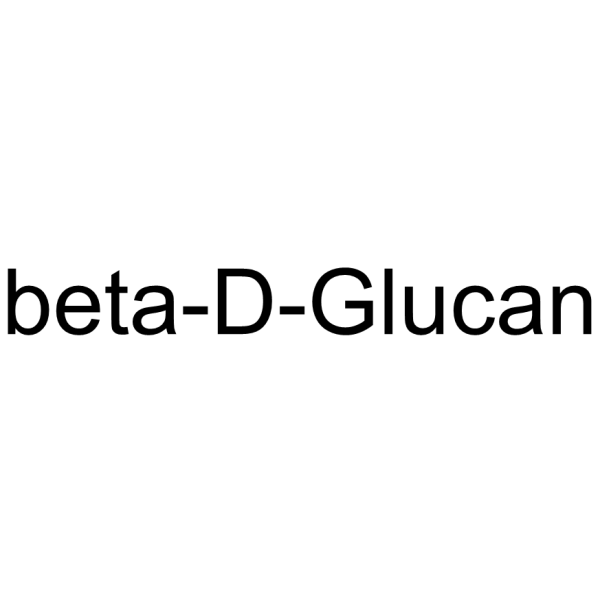
-
GC48998
β-Defensin-1 (human) (trifluoroacetate salt)
An antimicrobial peptide

-
GC48298
β-Defensin-2 (human) (trifluoroacetate salt)
An antimicrobial peptide

-
GC45230
β-Defensin-3 (human) (trifluoroacetate salt)
β-Defensin-3 is a peptide with antimicrobial properties that protects the skin and mucosal membranes of the respiratory, genitourinary, and gastrointestinal tracts.

-
GC45231
β-Defensin-4 (human) (trifluoroacetate salt)
β-Defensin-4 is a peptide with antimicrobial properties that protects the skin and mucosal membranes of the respiratory, genitourinary, and gastrointestinal tracts.

-
GC41623
β-Elemonic Acid
β-El Ácido elemÓnico es un triterpeno aislado de Boswellia papyrifera.

-
GC49769
β-Glucogallin
A plant metabolite and an aldose reductase 2 inhibitor

-
GC64619
β-Ionone
β-La ionona es eficaz en la inducciÓn de apoptosis en células de adenocarcinoma gÁstrico SGC7901. Actividad anticancerÍgena.
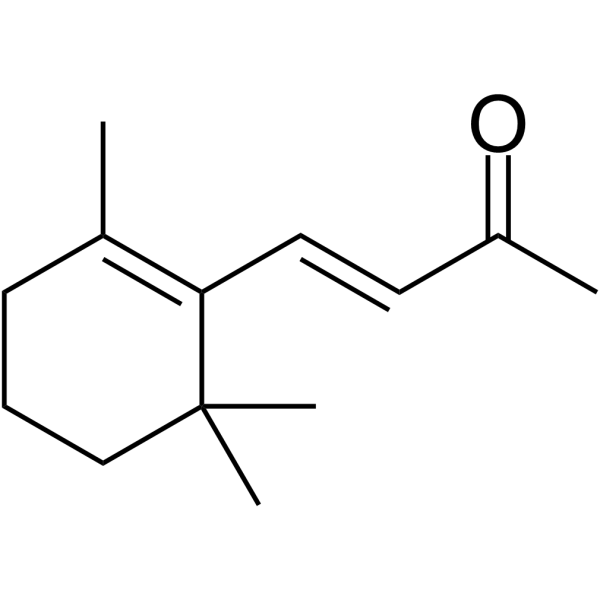
-
GC41502
β-Myrcene
β-Myrcene (β-ޚ-Myrcene), un compuesto volátil aromático, suprime la actividad de NF-κB inducida por TNFα.

-
GC45604
β-Rubromycin
β-La rubromicina es un inhibidor potente y selectivo de las polimerasas de ADN dirigidas por ARN del virus de la inmunodeficiencia humana-1 (VIH-1) (transcriptasa inversa).

-
GC52400
γ-Glu-Ala (trifluoroacetate salt)
A dipeptide

-
GC48312
γ-Glu-Cys (ammonium salt)
An intermediate in GSH synthesis

-
GC45238
δ14-Triamcinolone acetonide
δ14-Triamcinolone acetonide is a potential impurity found in commercial preparations of triamcinolone acetonide.

-
GC40307
δ2-cis-Hexadecenoic Acid
One of the first organisms in which quorum sensing was observed were Myxobacteria, a group of gram-negative bacteria, found mainly in soil and also common to marine and freshwater systems.

-
GC41393
ω-3 Arachidonic Acid methyl ester
ω-3 Fatty acids, represented primarily by docosahexaenoic acid, eicosapentaenoic acid, and α-linoleate, are essential dietary nutrients required for normal growth and development.

-
GC45713
(±)-α-Tocopherol Acetate
(±)-α-acetato de tocoferol ((±)-acetato de vitamina E), es una forma sintética de vitamina E activa por vÍa oral.

-
GC67191
(±)-α-Tocopherol nicotinate
(±)-α-El nicotinato de tocoferol, vitamina E - nicotinato, es un antioxidante liposoluble activo por vía oral que previene la peroxidación lipídica en las membranas celulares. (±)-α-El nicotinato de tocoferol se hidroliza en la sangre a α -tocoferol y niacina y pueden usarse en estudios de enfermedades vasculares relacionadas.
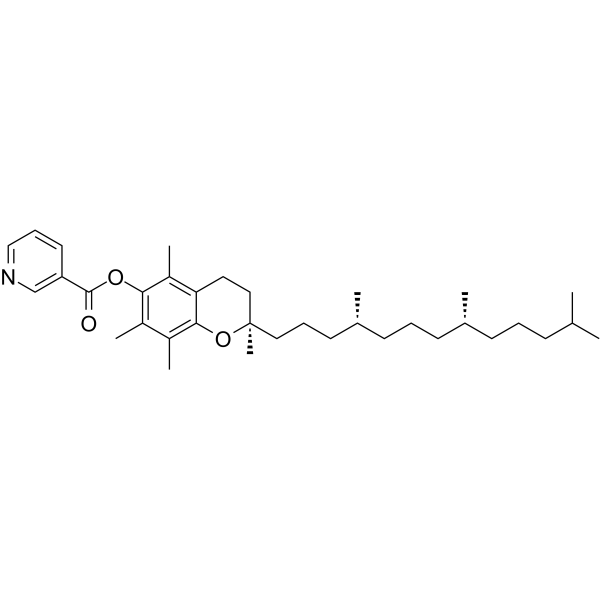
-
GC52010
(±)-10-hydroxy-12(Z),15(Z)-Octadecadienoic Acid
An oxylipin gut microbiota metabolite

-
GC52013
(±)-10-hydroxy-12(Z)-Octadecenoic Acid
An oxylipin and metabolite of linoleic acid

-
GC52421
(±)-10-hydroxy-12(Z)-Octadecenoic Acid-d5
An internal standard for the quantification of (±)-10-hydroxy-12(Z)-octadecenoic acid

-
GC40112
(±)-Climbazole-d4
(±)-Climbazole-d4 is intended for use as an internal standard for the quantification of climbazole by GC- or LC-MS.

-
GC50708
(±)-ML 209
An RORγt antagonist
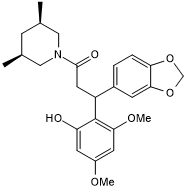
-
GC39271
(±)-Naringenin
(±)-naringenina es un flavonoide natural.
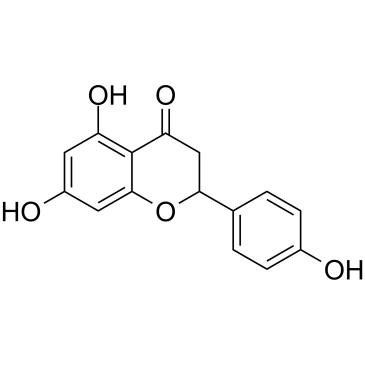
-
GC41212
(±)10(11)-EpDPA
Cytochrome P450 metabolism of polyunsaturated fatty acids produces numerous bioactive epoxide regioisomers.

-
GC40466
(±)11(12)-EET
(±)11(12)-EET es un inhibidor del inflamasoma NLRP3.

-
GC40467
(±)11-HETE
(±)11-HETE is one of the six monohydroxy fatty acids produced by the non-enzymatic oxidation of arachidonic acid.

-
GC40802
(±)12(13)-DiHOME
(±)12(13)-DiHOME is the diol form of (±)12(13)-EpOME, a cytochrome P450-derived epoxide of linoleic acid also known as isoleukotoxin.

-
GC41191
(±)13(14)-EpDPA
(±)13(14)-EpDPA (13,14-EpDPE) es el producto de la reacción de la epoxigenasa del citocromo P-450 con ácido docosahexaenoico (DHA).

-
GC40355
(±)13-HpODE
(±)13-HpODE (ácido 13-hidroperoxilinoleico) es una mezcla racémica de hidroperóxidos, que se produce por la oxidación del ácido linoleico por la lipoxigenasa.

-
GC41288
(±)17(18)-EpETE-Ethanolamide
(±)17(18)-EpETE-Ethanolamide is an ω-3 endocannabinoid epoxide.

-
GC40362
(±)18-HEPE
(±)18-HEPE is produced by non-enzymatic oxidation of EPA.

-
GC41655
(±)19(20)-EDP Ethanolamide
(±)19(20)-EDP ethanolamide is an ω-3 endocannabinoid epoxide and cannabinoid (CB) receptor agonist (EC50s = 108 and 280 nM for CB1 and CB2, respectively).

-
GC40270
(±)5(6)-DiHET
5(6)-DiHET is a fully racemic version of the enantiomeric forms biosynthesized from 5(6)-EET by epoxide hydrolases.

-
GC41203
(±)7(8)-EpDPA
Docosahexaenoic acid is the most abundant ω-3 fatty acid in neural tissues, especially in the brain and retina.

-
GC40801
(±)9(10)-DiHOME
(±)9(10)-DiHOME es el racemato de 9,10-DiHOME.

-
GC46000
(•)-Drimenol
A sesquiterpene alcohol

-
GC40809
(+)-β-Citronellol
(+)-β-Citronellol (D-Citronellol) es un monoterpeno alcohÓlico que se encuentra en el aceite esencial de geranio.

-
GC49268
(+)-δ-Cadinene
A sesquiterpene with antimicrobial and anticancer activities

-
GC45263
(+)-D-threo-PDMP (hydrochloride)
(+)-D-threo-PDMP is a ceramide analog and is one of the four possible stereoisomers of PDMP.

-
GC31691
(+)-DHMEQ
(+)-DHMEQ es un activador del factor de transcripciÓn antioxidante Nrf2.
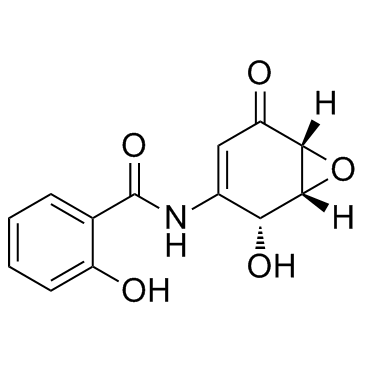
-
GC45266
(+)-Macrosphelide A
(+) - Macrosphelide A es un antibiótico macrólido.

-
GC40266
(+)-Praeruptorin A
(+) - Praeruptorin A es un componente bioactivo principal de Peucedanum praeruptorum (también conocido como Bai-Hua Qian Hu).

-
GC18749
(+)-Rugulosin
(+) - La rugulosina es una materia colorante cristalina de Penicillium rugulosum Thom.
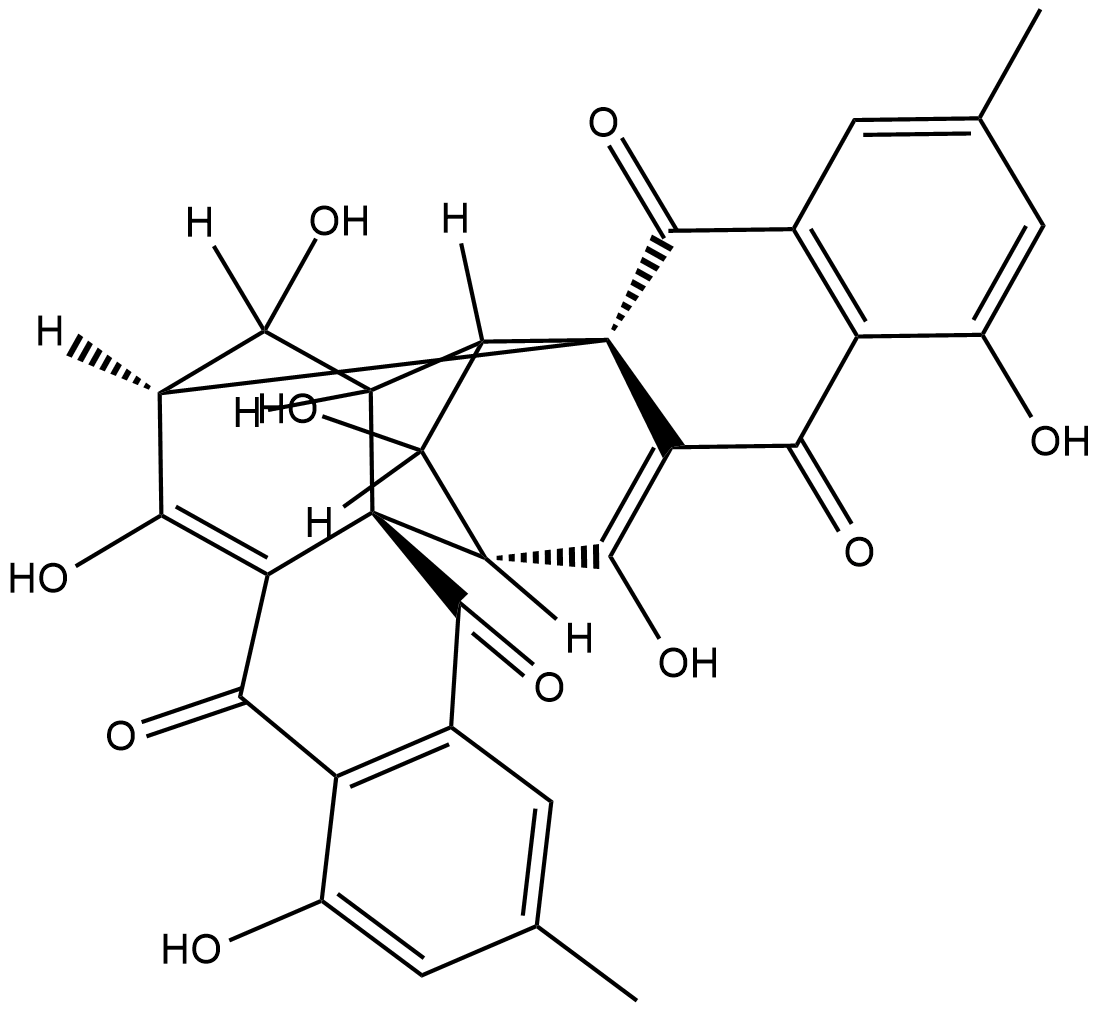
-
GC63969
(+)-Schisandrin B
(+)-Schisandrin B es un enantiÓmero de Schisandrin B.
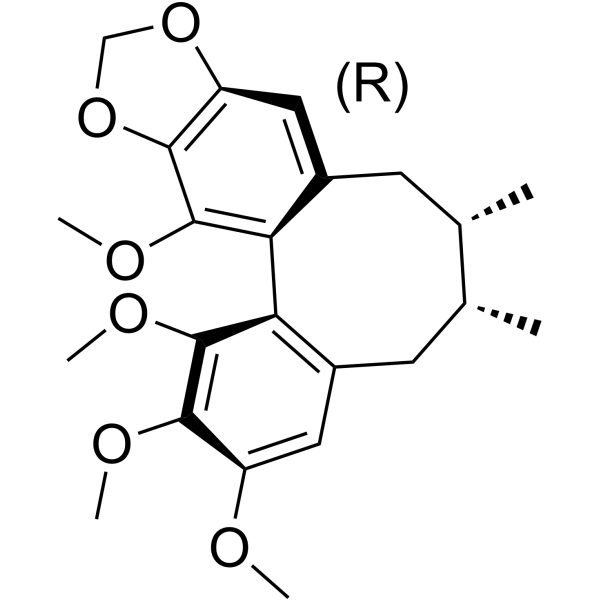
-
GC40264
(+)-Valencene
(+)-Valencene is a sesquiterpene that has been found in C.

-
GC49502
(-)-β-Sesquiphellandrene
A sesquiterpene with antiviral and anticancer activities

-
GC32705
(-)-DHMEQ (Dehydroxymethylepoxyquinomicin)
(-)-DHMEQ (Dehidroximetilepoxiquinomicina) (Dehidroximetilepoxiquinomicina) es un inhibidor potente, selectivo e irreversible de NF-κB que se une covalentemente a un residuo de cisteÍna.
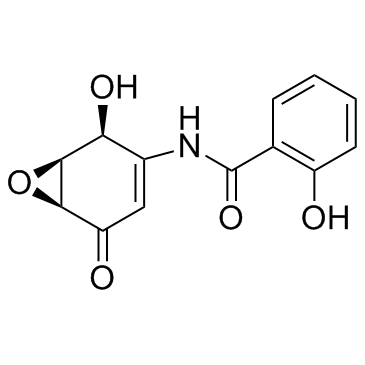
-
GC14049
(-)-Epigallocatechin gallate (EGCG)
Un fenol con diversas actividades biológicas.
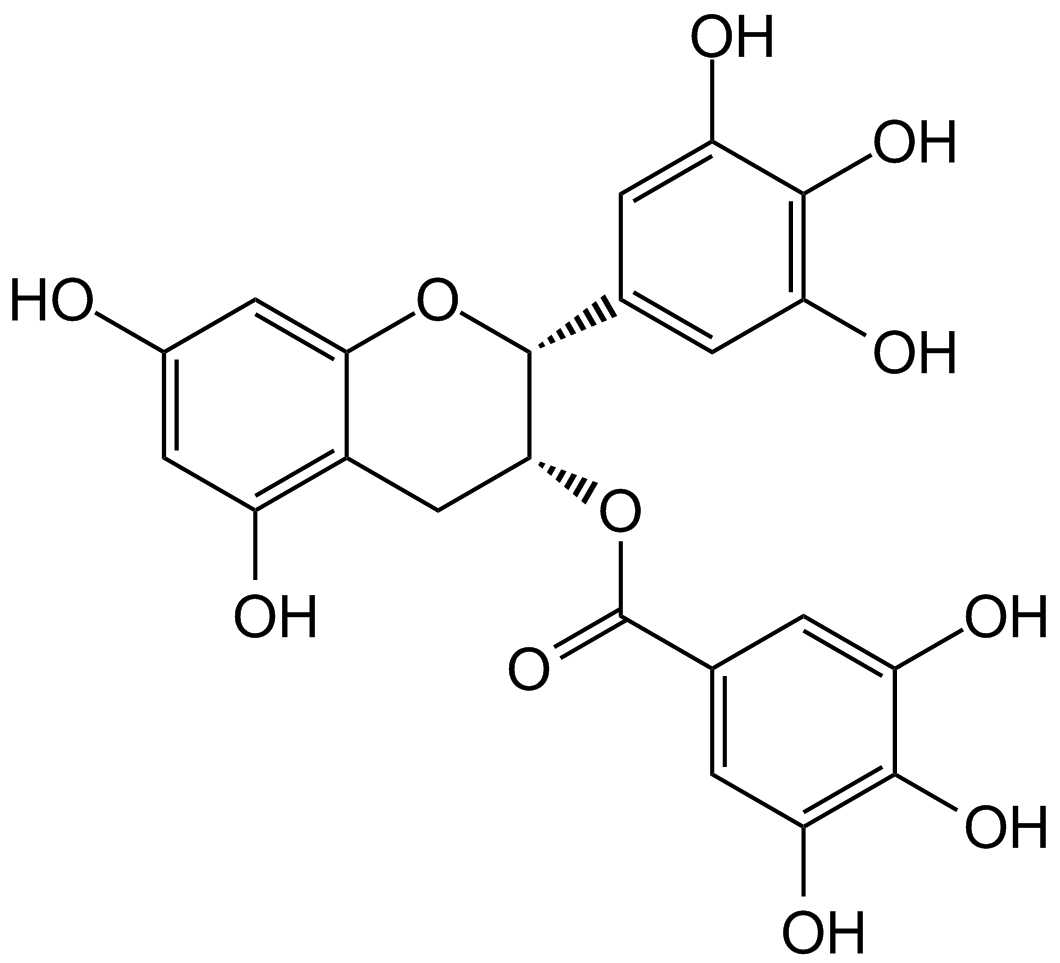
-
GC45248
(-)-FINO2
(-)-FINO2 es un potente inductor de ferroptosis. (-)-FINO2 inhibe la actividad de GPX4. (-)-FINO2 es un oxidante estable que oxida el hierro ferroso y es estable a diferentes niveles de pH. (-)-FINO2 provoca una peroxidaciÓn lipÍdica generalizada.

-
GC46245
(-)-G-Lactone
A bicyclic γ-lactone

-
GC38316
(-)-Limonene
El (-)-limoneno ((S)-(-)-limoneno) es un monoterpeno que se encuentra en muchos aceites de aguja de pino y en trementina.
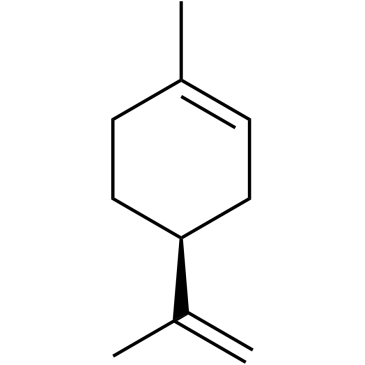
-
GC46247
(-)-Mycousnine
A microbial metabolite with antibacterial and antifungal activities

-
GC45251
(-)-Neplanocin A
S-Adenosylhomocysteine (SAH) hydrolase catalyzes the reversible hydrolysis of SAH to adenosine and homocysteine.

-
GC45272
(-)-Rasfonin
(-)-Rasfonin es un metabolito secundario fÚngico e inhibe las pequeÑas proteÍnas G Ras. (-)-Rasfonin induce apoptosis, necrosis y autofagia en células ACHN (una lÍnea celular de carcinoma renal).

-
GC40803
(25S)-δ7-Dafachronic Acid
During unfavorable environmental conditions, C.

-
GC52442
(D)-PPA 1 (trifluoroacetate salt)
An inhibitor of the PD-1-PD-L1 protein-protein interaction

-
GC41700
(E)-2-(2-Chlorostyryl)-3,5,6-trimethylpyrazine
(E)-2-(2-Chlorostyryl)-3,5,6-trimethylpyrazine (CSTMP) is a stilbene derivative with antioxidant and anticancer activities.

-
GC61668
(E)-3,4-Dimethoxycinnamic acid
El Ácido (E)-3,4-dimetoxicinÁmico es el isÓmero menos activo del Ácido 3,4-dimetoxicinÁmico.
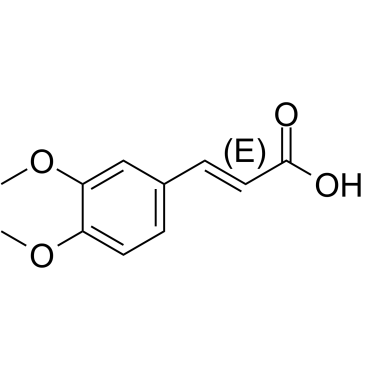
-
GC41702
(E)-5-(2-Bromovinyl)uracil
(E)-5-(2-Bromovinyl)uracil (BVU) is a pyrimidine base and an inactive metabolite of the antiviral agents sorivudine and (E)-5-(2-bromovinyl)-2'-deoxyuridine (BVDU) that may be regenerated to BVDU in vivo.

-
GC49003
(E)-Ajoene
A disulfide with diverse biological activities

-
GC41703
(E)-C-HDMAPP (ammonium salt)
Synthetic and natural alkyl phosphates, also known as phosphoantigens, stimulate the proliferation of γδ-T lymphocytes.

-
GC39747
(E/Z)-GSK5182
(E/Z)-GSK5182 es un compuesto racémico de los isÓmeros (E)-GSK5182 y (Z)-GSK5182.
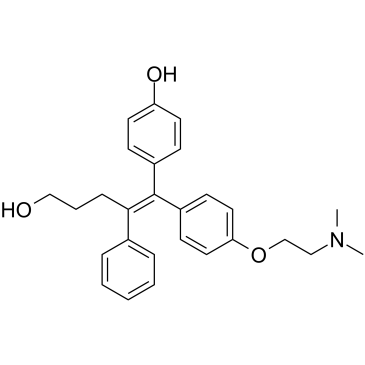
-
GC61564
(E/Z)-IT-603
(E/Z)-IT-603 es una mezcla de E-IT-603 y Z-IT-603 (IT-603).
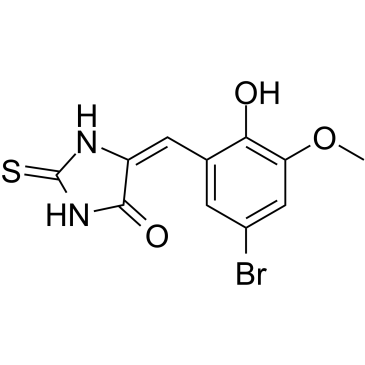
-
GC41721
(R)-α-Lipoic Acid
(R)-α-Lipoic acid is the naturally occurring enantiomer of lipoic acid, a cyclic disulfide antioxidant.

-
GC49167
(R)-(+)-Trityl glycidyl ether
A synthetic precursor

-
GC13030
(R)-(-)-Ibuprofen
(R)-(-)-Ibuprofen es el enantiÓmero R de Ibuprofen, inactivo en COX, inhibe la activaciÓn de NF-κB; El (R)-(-)-ibuprofeno exhibe efectos antiinflamatorios y antinociceptivos.
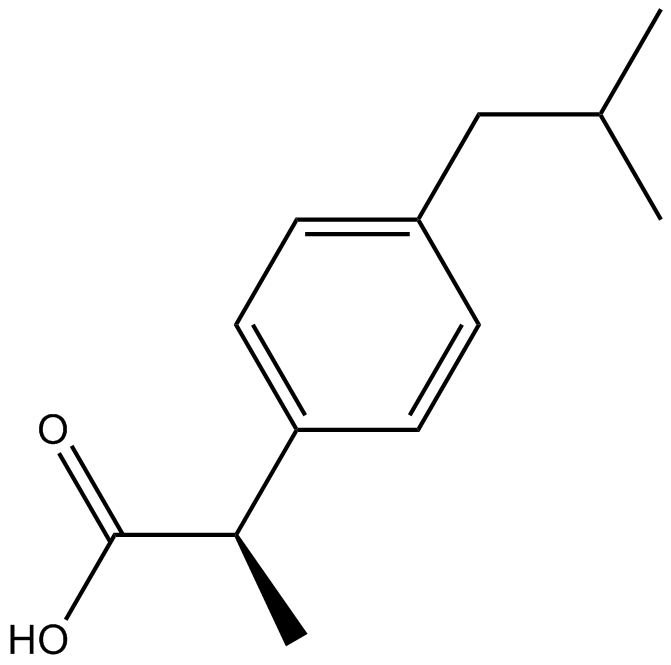
-
GC69823
(R)-(-)-Ibuprofen-d3
(R)-(-)-Ibuprofen-d3 es el isotopo deuterado de (R)-(-)-Ibuprofen. (R)-(-)-Ibuprofen es un isómero R del Ibuprofeno que no tiene efecto sobre la COX y puede inhibir la activación del NF-κB. (R)-(-)-Ibuprofen tiene propiedades antiinflamatorias y se utiliza en investigaciones para aliviar el dolor.
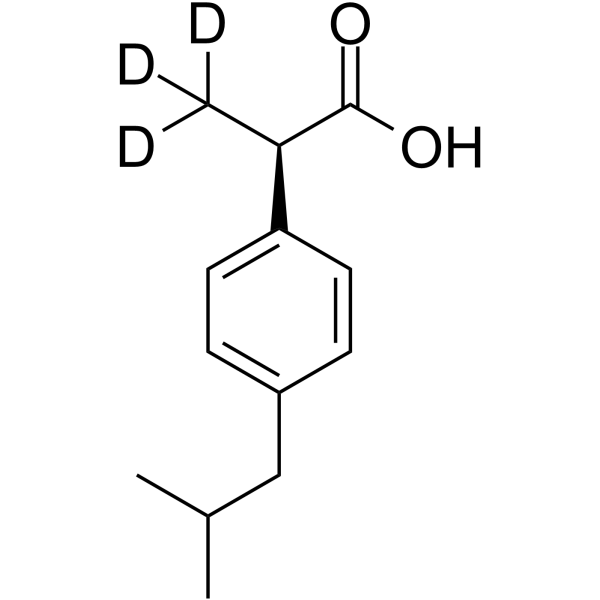
-
GC41620
(R)-(-)-Mellein
(R)-(-)-Mellein es un antibiÓtico aislado de fluidos de cultivo de este Aspergillus.

-
GC41712
(R)-3-hydroxy Myristic Acid
Lipopolysaccharides (LPS) are components of the cell walls of Gram-negative bacteria.

-
GC65610
(R)-5-Hydroxy-1,7-diphenyl-3-heptanone
La (R)-5-hidroxi-1,7-difenil-3-heptanona es un diarilheptanoide que se puede encontrar en Alpinia officinarum.

-
GC65373
(R)-IL-17 modulator 4
El modulador 4 de (R)-IL-17 es la configuraciÓn R del modulador 4 de IL-17.

-
GC12578
(R)-Lisofylline
(R)-Lisofylline ((R)-Lisophylline) es un (R)-enantiÓmero del metabolito de Pentoxifylline con propiedades antiinflamatorias.
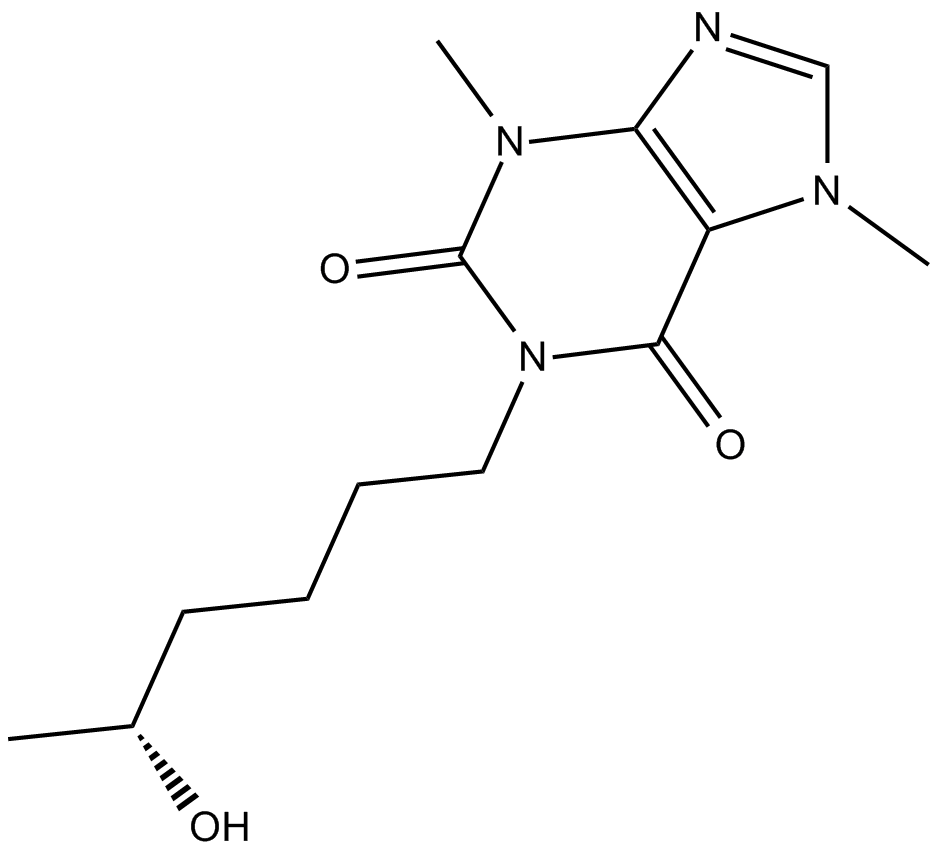
-
GC52185
(R,S)-Anatabine-d4

-
GC39321
(Rac)-Myrislignan
(Rac)-Myrislignan es el racemato de Myrislignan.
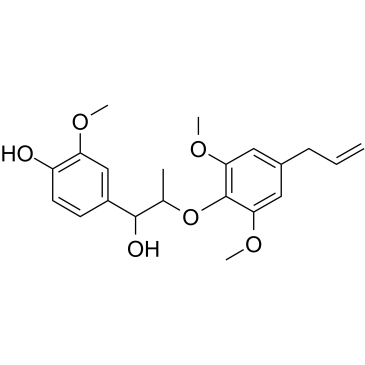
-
GC66334
(Rac)-PF-184 hydrate
El hidrato de (Rac)-PF-184 es un potente inhibidor del factor inhibidor κB cinasa 2 (IKK-2) con una IC50 de 37 nM. El hidrato de (Rac)-PF-184 tiene efectos antiinflamatorios.
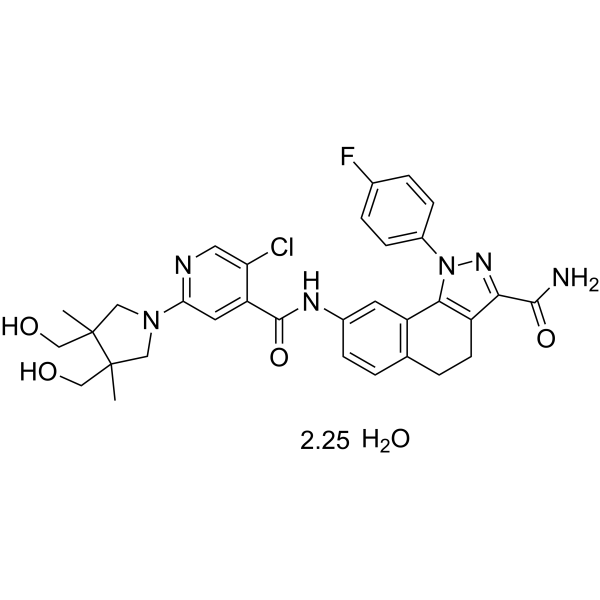
-
GC69799
(Rac)-ZLc-002
(Rac)-ZLc-002 es un inhibidor de la interacción entre nNOS y NOS1AP, una proteína de unión a óxido nítrico sintasa 1. Este compuesto inhibe el dolor neuropático inflamatorio y el dolor inducido por quimioterapia, y también reduce sinérgicamente la viabilidad celular del tumor en combinación con Paclitaxel.
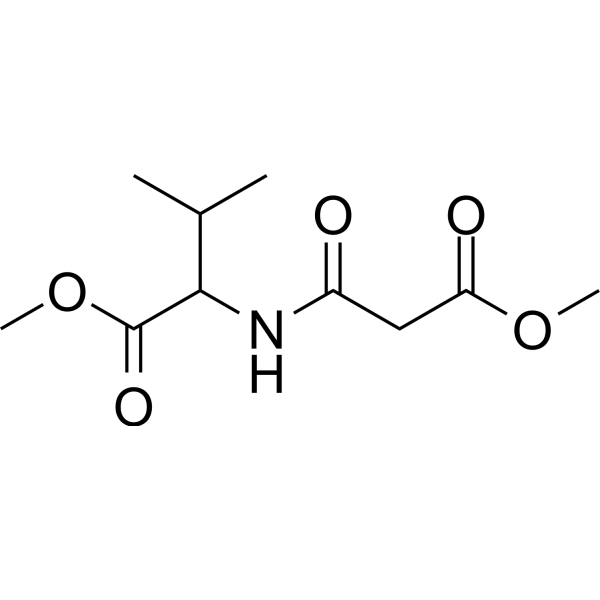
-
GC46345
(S)-(-)-Perillaldehyde
(S)-(-)-PerillaldehÍdo es un componente principal en el aceite esencial que contiene Perillae Herba.

-
GC49028
(S)-3-Thienylglycine
A thienyl-containing amino acid

-
GC52192
(S)-4'-nitro-Blebbistatin
(S)-4'-nitro-Blebbistatin es un inhibidor de miosina II no citotÓxico, fotoestable, fluorescente y especÍfico, utilizado en el estudio del papel especÍfico de la miosina II en estudios fisiolÓgicos, de desarrollo y biolÓgicos celulares.

-
GC48719
(S)-Canadine
La (S)-canadina es un alcaloide e intermedio en la biosÍntesis de la berberina con actividad insecticida.

-
GC46352
(S)-DO271
An inactive control for DO264

-
GC11867
(S)-Lisofylline
inactive optical enantiomer of (R)-LSF, an anti-inflammatory agent
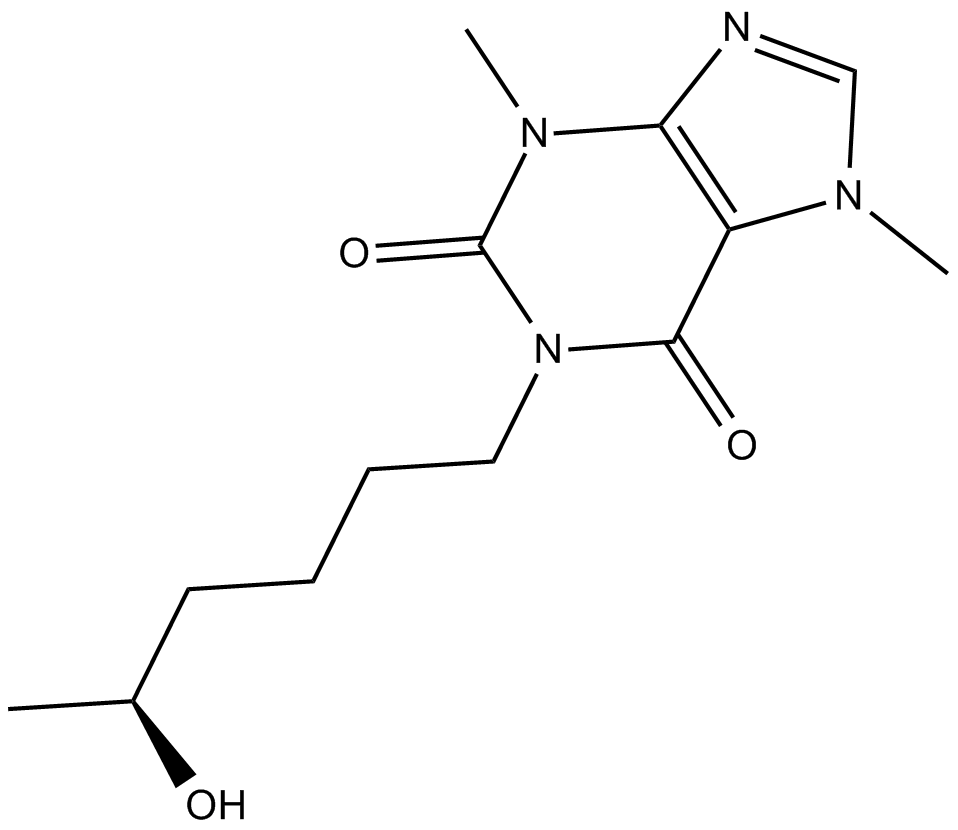
-
GC13427
(S)-Methylisothiourea sulfate
El sulfato de (S)-metilisotiourea es un inhibidor potente, selectivo y competitivo de la óxido nítrico sintasa inducible (iNOS).
